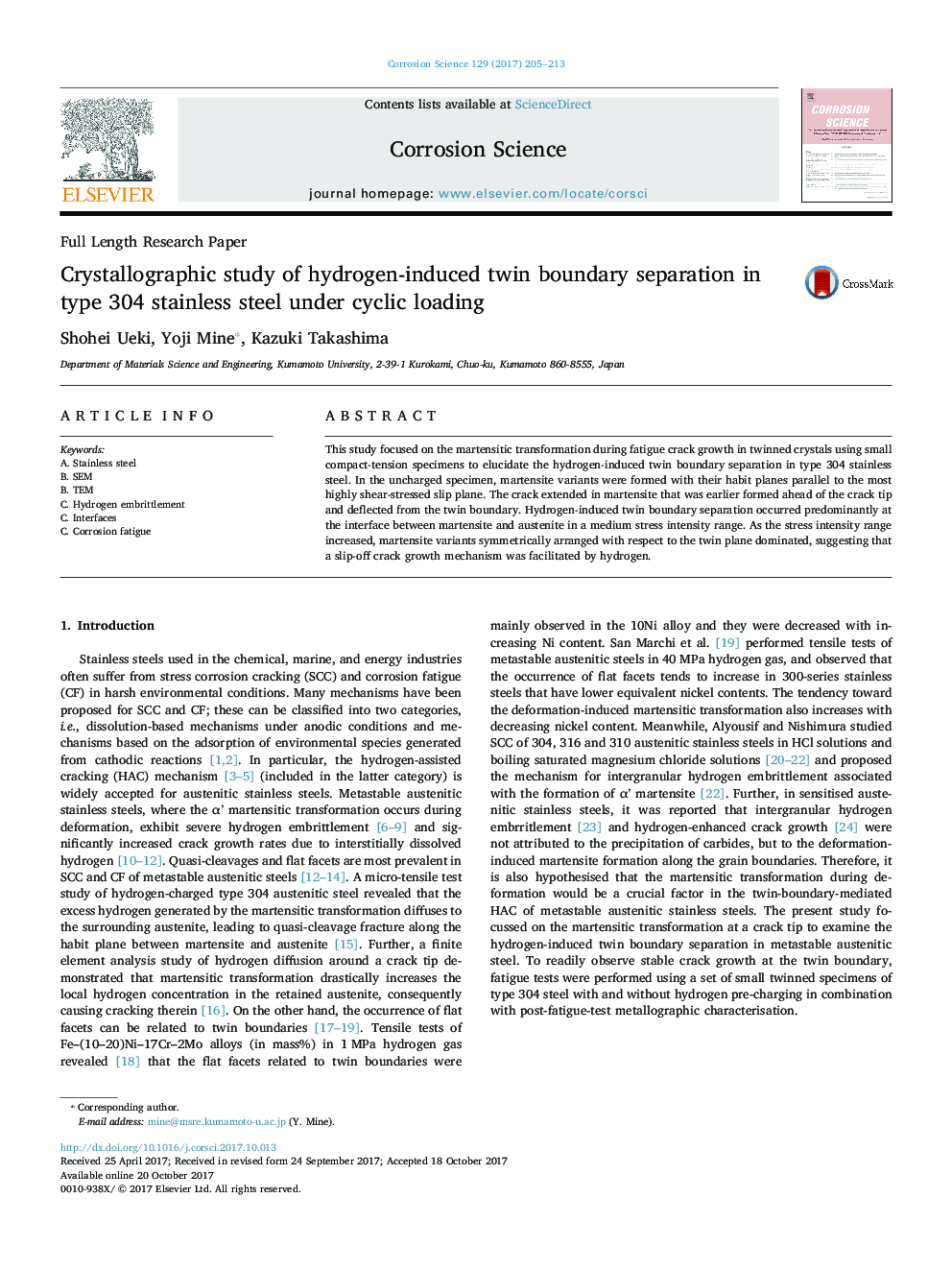| Article ID | Journal | Published Year | Pages | File Type |
|---|---|---|---|---|
| 7894160 | Corrosion Science | 2017 | 9 Pages |
Abstract
This study focused on the martensitic transformation during fatigue crack growth in twinned crystals using small compact-tension specimens to elucidate the hydrogen-induced twin boundary separation in type 304 stainless steel. In the uncharged specimen, martensite variants were formed with their habit planes parallel to the most highly shear-stressed slip plane. The crack extended in martensite that was earlier formed ahead of the crack tip and deflected from the twin boundary. Hydrogen-induced twin boundary separation occurred predominantly at the interface between martensite and austenite in a medium stress intensity range. As the stress intensity range increased, martensite variants symmetrically arranged with respect to the twin plane dominated, suggesting that a slip-off crack growth mechanism was facilitated by hydrogen.
Related Topics
Physical Sciences and Engineering
Materials Science
Ceramics and Composites
Authors
Shohei Ueki, Yoji Mine, Kazuki Takashima,
